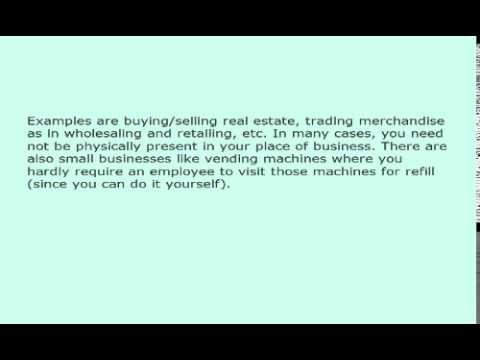Does Your Retirement Income Bucketing Strategy Have A Leak
Post on: 2 Июнь, 2015 No Comment

The Internet and other technological advances have had a profound impact on the construction and delivery of financial advice. Financial strategies can be customized more easily, and more robust portfolio strategies have emerged that can be both more intuitive to investors and more effective in meeting their goals and objectives.
One such financial framework that has been widely discussed and used by financial advisors to create retirement income strategies is the so-called bucketing framework. In this construct, the advisor typically segments future income needs into different time periods and assigns a specific set of assets to meet the income needs for each period. For example, a four bucket retirement income framework may have the following time periods:
Period 1. Years 1 through 5 (i.e. the next five years)
Period 2. Years 6 through 10
Period 3. Years 11 through 20
Period 4. Years 21 and later
Typically, the periods that are closer to today will have a set of investments that are more conservatively invested, and those that are further in the future will have investments that are more aggressively invested. The underlying principle is that, the more time you have until you need to convert a given bucket of savings into income, the more likely the returns will move to their long-term mean return and, as a result, there is less risk that we will realize a loss for a more risky investment.
The dollar amount assigned to each bucket will represent the amount of money, together with future anticipated investment returns, that will be required to meet future income needs for the applicable time period.
Here is an illustration of what a bucketing strategy might look like (note. this is to illustrate the concept of a bucket, and is not intended to represent an actual recommended retirement income strategy):
In general, bucketing is a very sound approach to creating a retirement income strategy.
But here is where you can run into a big problem if you are not careful.
Nonsensical Future Portfolios
Quantifying your future time horizon and adjusting the investment risk to based upon the length of the time horizon (i.e. the longer the time horizon, the more risk you can bear) is perfectly appropriate. However, you must be realistic about how your portfolio will evolve over time.
Generally speaking, your investment portfolio should become more conservative as you grow older. This is how a typical target date fund is designed, recognizing the shortening time horizon that occurs as we move forward each year into retirement.
However, if in your bucketing strategy you directly or indirectly assume that we are going to hold on to each bucket, keeping it unchanged until we reach the time period corresponding to each bucket, you are making a big mistake. Consider what your portfolio might look like right after the fifth year in the portfolio presented above — at this time, we would have consumed all of the cash and TIPs in Bucket #1, and would have a portfolio that will be more aggressively invested than it looked five years earlier, and after 10 years, we would be 100% in stocks!
This assumption may be explicit, where you might be able to actually see what the assumed portfolio composition will look like each year during retirement, or it may be implicit. For example, I have seen some methods that work as follows:
- For each bucket, we identify the time period over which it must produce income, and estimate the amount of money we need when we reach the beginning of this period. For example, in the illustrative bucket strategy we presented earlier, we may have estimated that we would need $320,000 at the end of year 20 to meet our income needs for years 21 and later.
- Next, an assumption is made for the investment return on the investments in each bucket. For Bucket #4, let’s assume that a 7% annual return is assumed on the equity portfolio in this bucket.
- Finally, we discount that $320,000 with 20 years’ worth of investment returns at 7% to estimate how much we need to put into this bucket today — this calculation comes out to approximately to our $100,000.

Under this method, we are implicitly assuming you will hold on to this portfolio unchanged throughout the 20-year period.
The Right Approach
A more practical and realistic approach would be to define a set of target asset allocations corresponding to different times in the future, presumably reflecting a gradation toward a more conservative asset allocation, and apply the investment returns for each year that are consistent with these portfolios.
Under the construct of a bucketing strategy, a good design will realize that you must shift a portion of each bucket each year into a preceding bucket. For example, at the end of the first year, we should take approximately 1/5th of Bucket #2 and move it into Bucket #1, 1/10th of Bucket #3 and move it to Bucket #2, and some portion of Bucket #4 should be moved to Bucket #3. This reallocation essentially refreshes the buckets to be realigned with your future income needs.
Using the example presented earlier, the following chart illustrates how this reallocation may look after the first year (for simplicity, I will ignore the investment returns that would have occurred during the year):
During the first year, we would have spent $25,000 out of Bucket #1, leaving us with only the next four years of income in Bucket #1. Therefore, we move the portion of funds in Bucket #2 ($25K) into Bucket #1 that related to year 6 at the beginning of the year (and what is now year 5). Similarly, for Bucket #2 we must grab some of the assets in Bucket #3 ($15K) that related to year 11 at the beginning of the year (now year 10) and move these into Bucket #2. And, of course, we repeat this process with Bucket #4.
What’s the problem with not being this precise? Well, under the flawed approach, you are overestimating the amount of investment income that you can realize, because it is assuming that you will be holding on to more risky, high return investments longer than you actually will . This would likely result in overestimated retirement income — in other words, you will probably run out of money earlier than you expect, so you really can’t spend as much as you might have originally thought.
Another, more subtle problem with the buy and hold assumption is that it ignores the exposure that you will have to the risk of the sequence of investment returns . Volatility investments, like stocks, are likely to experience large movements upward and downward from year to year. When these investments are assumed to be bought and held, much of this volatility ends up not having much of an effect over long periods of time, but when you must draw down these assets from one year to the next (which you would do if you needed to shift the portfolio toward more conservative investments) you are exposed to this year-to-year volatility. In other words, you will realize gains and losses each year as you sell these investments and cannot recoup them. This means that you may very well have overestimated the proportion of your portfolio that should be invested in stocks.
Conclusion
When you are building a retirement income plan, or have a financial advisor building one for you, be sure that you understand the assumed investment path that the plan is making — it should be one that becomes more conservative as you age, and this should be clearly reflected within the analysis. This will help ensure that you can stay on target to meet your goals as you move forward into retirement.
Disclosure: I have no positions in any stocks mentioned, and no plans to initiate any positions within the next 72 hours. I wrote this article myself, and it expresses my own opinions. I am not receiving compensation for it. I have no business relationship with any company whose stock is mentioned in this article.














